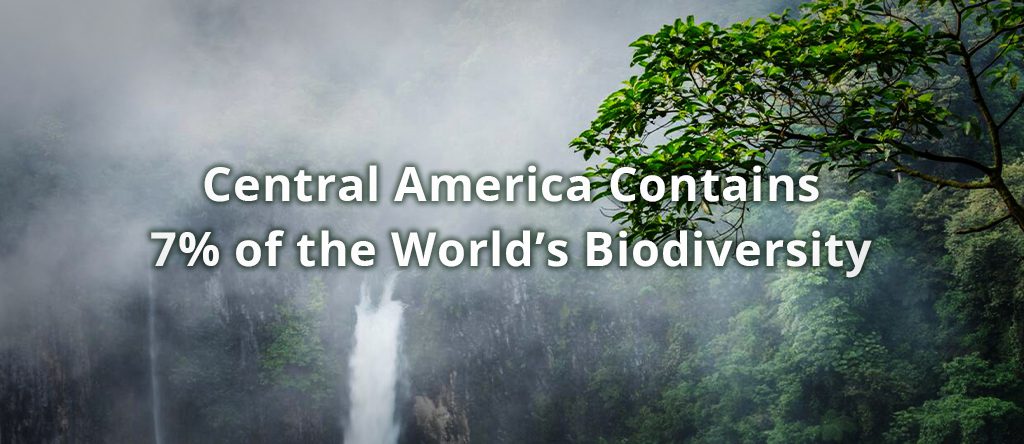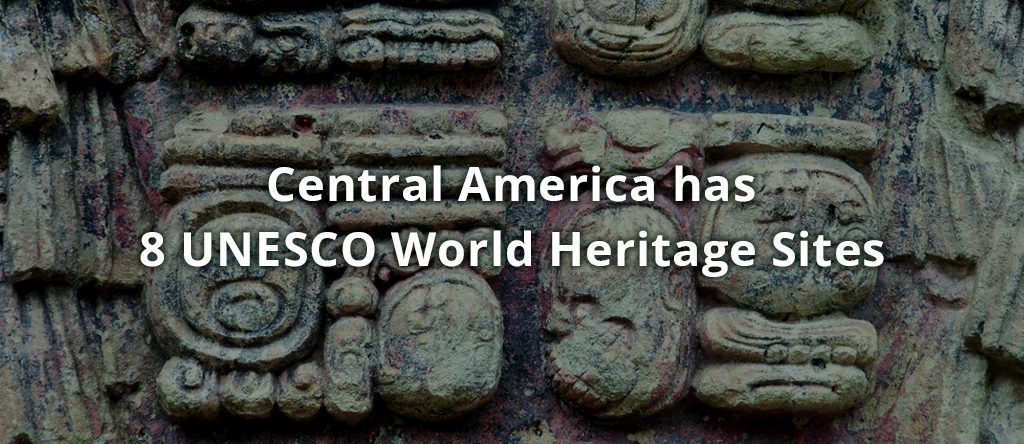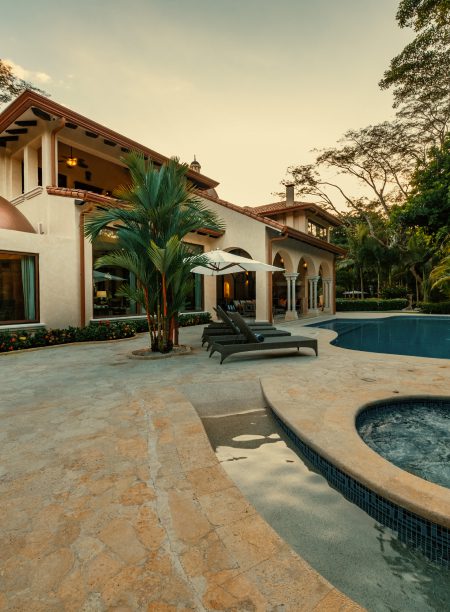Central America is full of different cultures and stunning surroundings, making it attractive for visitors. It is the isthmus that links the southern boundary of Mexico with the northern edge of Colombia. By getting to know what is peculiar about this area and its various museums and parks, or just how vegetation has been preserved in many places, your journey will become more interesting, and you will get to know all about the region.
Let us begin our journey to Central America!
Geography and Climate
The Pacific Ocean borders Central America on its western side, while the Caribbean Sea lies on its eastern periphery. This region has various landscapes, ranging from steep mountains and fiery volcanic cones in activity to tropical rainforests, lush green woods, and sandy beaches with no contamination. The central climate is tropical, with marked wet/dry seasons. Generally, visiting most parts of Central America between November and April (during the dry season) is advisable, bearing in mind that the conditions are ideal for exploration.
Central America is marked by major mountain ranges, such as the Sierra Madre de Chiapas and Cordillera Isabelia, that lie along its coasts. These mountains define the climate within the area they are found in, leading to variation in the microclimates experienced within these areas, ranging from cold highlands to hot, wet lowlands. It is found in a region that is surrounded by fire, known as the Pacific Ring of Fire; hence, it also experiences earthquakes and volcanic activities.

Language and Communication
Spanish is the principal language throughout Central America, whereas English is spoken relatively often among Belize residents and a few tourist haunts. Knowing a few simple Spanish terms would enrich your communication with people from local communities, showing them that you respect the Ticos way of life. Besides, mutually dependent languages remain in use in different families, thus enhancing the variety of spoken languages within this particular geographical area.
Being conversant with local Costa Rican customs as well as social norms will facilitate smooth communication in Central America. In this region, people appreciate good manners and politeness. A warm “Buenos días” (good morning) or “buenas trades” (good afternoon) greeting is common. The diverse cultures in this area may include Indigenous languages like the Mayan dialects found in Guatemala or Garifuna, which is spoken mainly along the coastlines of Guatemala, Nicaragua, and Belize.
History and Culture
Pre-Columbian civilizations like the Maya have roots in Central America’s history. They continue to exist, as evidenced by their incredible ruins. In the 16th century, when Spanish conquerors came, transformative events occurred, including a mix of European traditions and Catholic religion. Indigenous people affected by colonial powers managed to keep their own practices, thus establishing various habits that may seem both modern and ancient in one context.
Advanced societies such as the Mayans, known for their remarkable building prowess, star expertise, and sophisticated organization, existed back in the pre-colonial era. Evidence of this can be drawn from places like the ruined towns of Tikal in Guatemala or Copán, which are located in Honduras. Central America was profoundly affected by the Spanish conquest, carried out by figures such as Hernán Cortés and Pedro de Alvarado.
Indigenous Americans suffered from huge population decreases due to the Europeans bringing diseases like influenza (the flu), chickenpox, and measles, to which they had grown resistance. The spread of diseases from Europe caused a substantial decrease in the number of Native American tribes due to wars and slave trading. However, the Spanish colony abroad profoundly impacted the current native language (creating a creole), religious practices such as Catholicism (replacing or blending with traditional spiritualities), and architectural designs that sometimes intertwined with native buildings or were purely local expressions of what later became known as Spanish Colonial architecture.
Countries of Central America
Central American countries consist of seven unique nations, each offering distinct experiences and attractions. Whether you’re exploring ancient ruins, lush rainforests, or vibrant cities, the countries in Central America provide a rich tapestry of cultural and natural beauty.
Here’s a brief overview of what countries are in Central America and their highlights.
Belize
Home to a stunning barrier reef, vibrant marine life distinguishes Belize as a diving and snorkeling paradise. The country’s varying ecosystems also include lush jungles and Mayan ruins. Belize City, the largest city, is the main link to the Cayes and the renowned Blue Hole, whereas inland adventures can be found in the Cayo District with its caves, rivers, and ancient archeological sites.
Guatemala
Guatemala provides a rich cultural experience with its awe-inspiring Tikal ruins and picturesque Lake Atitlán. Furthermore, it adds to its charm through vibrant Indigenous communities and colonial architecture. Elegant culture thrives in the highland town of Antigua with well-preserved Spanish Baroque-influenced buildings and lively cultural activities.
Honduras
Honduras is famous for its ancient city of Copán and also for the coral reefs in the Bay Islands. Divers love Utila, Roatán, and Guanaja, which have clear waters full of life.
El Salvador
El Salvador is Central America’s tiniest nation. It has amazing volcanoes and wonderful seashores, perfect for surfing. The Ruta de Las Flores, a scenic path through the hills, passes through quaint villages, coffee farms, and bright murals depicting local culture and nature.
Nicaragua
Nicaragua is famous for its diverse terrains and friendly people, from the colonial beauty of Granada to Corn Island’s clear beaches. Several active volcanoes, such as Masaya and Mombacho, are found in the country and provide exciting hiking experiences with amazing scenery.
Costa Rica
Costa Rica is known for its dedication to conservation and is considered a pioneer of ecotourism. Spectacular natural landscapes characterize Manuel Antonio and Corcovado National Parks in the country. Costa Rica contains numerous habitats, from the evergreen cloud forests to the coastal regions, making it a good place for those interested in wildlife watching, birdwatching, and nature explorations.
Panama
Panama has a monument of engineering—the Panama Canal—that attracts a whole bunch of tourists and visitors. For example, if you want to enjoy beautiful and clean beaches, locals can argue that San Blas is the best since it has the Guna Yala Indigenous people, whose culture is still not extinct. Despite this, there are other attractions in Panama’s dense rainforest and dazzling shores, not forgetting about Panama City, where you can witness great music, art, or dance unrevealed to many.

Natural Wonders and Biodiversity
Central America is a place where various plants and animals thrive. There are many important parks, like Corcovado National Park in Costa Rica or Tikal National Park in Guatemala, which are large and have many different animals. Moreover, there are some captivating mountains here, too, like the Masaya Volcano in Nicaragua, which still erupts today, as well as beautiful sandy areas on both of its coasts, either facing Mexico’s side or looking out into the Atlantic Ocean.
Central America is the habitat of iconic exotic species such as jaguars, sloths, quetzals, and sea turtles. These species rely on diverse ecosystems (tropical rainforests, cloud forests, coastal areas) within the region to maintain a high level of biodiversity. Protective measures have been implemented to save these ecosystems in the long run through protected areas and wildlife sanctuaries that guarantee their survival.
Local Cuisine and Gastronomy
Central America’s countries have a wonderful mix of Indigenous, Spanish, and African influences. My favorites are Belize’s rice and beans, El Salvador’s pupusas, and Costa Rica’s gallo pinto—they make everyone’s mouth water! Their individual culinary distinctions show the diversity of their cultural heritage and the availability of local products.
In Belize, seafood is a prominent element in Costa Rican cuisine. This can be seen in dishes like conch fritters and hudut (a Garifuna fish stew) that reflect the coast’s range of resources.
In Guatemala, traditional fare such as tamales and pepian (a thick meat sauce) are two notable examples of the melding of Indigenous and Spanish cuisine styles.
In Nicaragua, vigorón (a cassava dish with pork rinds and cabbage) and nacatamales are among the popular traditional Costa Rican diet.
Adventure Activities
Central America is an ideal destination for travelers seeking adventure, with various activities such as hiking, mountain climbing, diving, and surfing available. Whether exploring Costa Rica’s cloud forests or swimming at Belize’s Blue Hole, the varied terrains allow for many outdoor activities in Central America.
Panama’s Volcán Barú is an excellent climb for those who love hiking, and Santa Ana Volcano in El Salvador is rewarding. Water sports are also popular in San Juan del Sur in Nicaragua, where international surfing or scuba diving tours in Honduras’ Bay Islands are available.
Sustainable and Ecotourism
In Central America, it’s really important that people travel in a way that won’t harm the environment and, at the same time, help locals. Various eco-friendly traveling alternatives and drives can be used for this purpose, such as residing at eco-lodges, taking part in wildlife conservation programs, or promoting handicrafts from the locality.
Countries like Costa Rica have been at the forefront of ecotourism, where sustainable practices are encouraged, leading to mutual benefits for the environment and local communities. For instance, turtle conservation programs are available through community-based tourism for guided nature walks and authentic cultural experiences, whereby visitors contribute to the local economy.
Learn what makes Costa Rica a leader in sustainability and ecotourism through this article.

Conclusion
Central America is a region full of diversity and experiences that travelers can enjoy. These experiences are due to its rich history, cultural heritage, outstanding natural beauty, and adventure activities.
There is something for everyone who visits this amazing place. If you understand and respect what makes it different from any other place, you will have a memorable and purposeful trip to Central America.
So, pack your bags, embrace the adventure, and discover the wonders of Central America.











